- Home
- Kim Harrison
The Hollows Insider (the hollows)
The Hollows Insider (the hollows) Read online
The Hollows Insider
( The Hollows )
Kim Harrison
New York Times bestselling author Kim Harrison has won legions of fans with her sexy supernatural novels featuring bounty-hunting witch Rachel Morgan. And now comes a unique look inside her beloved Hollows series that no fan should miss. . . . The Hollows Insider
In the Hollows, the supernatural Inderlanders rule, and humanity must abide by their conventions, or else.
To survive among vampires, witches, Weres, gargoyles, trolls, fairies, and banshees--to say nothing of demons--humanity needs a guide. And now, written by Kim Harrison herself, here is an insider's look at the supernatural world of the Hollows, from an overarching new story to character profiles, maps, spell guides, charm recipes, secret correspondence from the elusive Trent Kalamack, and much more.
The Hollows Insider
(A book in the Rachel Morgan series)
A non fiction book by Kim Harrison
Hollows Timeline
1953 Watson and Crick discover the DNA double-helix model. Collaborating with Rosalind Franklin, they use Cold War funding for their own research instead of for space and unconventional weapon development. This greatly advances the understanding of genetic manipulation as the US develops genetic weapons instead of nuclear. Space exploration fizzles out.
1958 Rosalind Franklin continues her research, helping to push genetic understanding up for the following twenty years and giving us a wealth of genetically produced drugs in the 1960s.
1962 Genetic insulin becomes readily available.
1966-1969 Turn begins and ends. The T4 Angel virus transported by a tomato designed to feed the people of the third worlds.
1979 Ivy and Trent are born.
1980 Kisten is born.
1981 Rachel is born. Personal computers become available.
1995 Trent and Rachel's fathers die. Leon Bairn quits the I.S. and is assassinated to keep his findings quiet.
1997 Rachel graduates High School and starts classes at a two-year school.
1999-2003 Rachel interns with the I.S.
2001 Ivy joins the I.S. as a full runner after graduating from a four-year course of study.
2003 Rachel and Ivy work together during Rachel's last year as an intern.
2006 Rachel quits the I.S.
Of Vampires—Living and Not So Living
Published in conjunction with
Cincinnati’s FIB Inderland Department;
FIB Inderlander Handbook, issue 7.23
By Rachel Morgan
Even before the Turn, vampires have held a place in literature as figures of power and terror, lusting after both our blood and will. They’re capable of horrific actions with no sense of remorse, instilling humans and Inderlanders alike with a healthy respect born in fear. But even more dangerous than a hungry vampire is trying to confront one in ignorance. It is with this in mind that I agreed to put on paper the distinctions that separate the big-bad-ugly wannabes from the really big-bad-uglies. Both can kill you, but if you know their limits and liabilities, this very powerful, manipulative branch of the Inderland family can be understood and handled in a successful manner. And if that fails, shoot ‘em until they stop moving.
Living vampires are either high-blood—vampires conceived within a living vampire and therefore having an inactive vampire virus fixed into their fetal genome to modify their development, or low-blood—humans bitten by an undead and existing in a tenuous, halfway-turned status. Only an undead vampire has the active form of the virus that can infect a human. The virus happily settles itself within cells of the blood-producing bone marrow of its new host and immediately goes dormant. Very little of the vampire’s abilities or liabilities are imparted to the hapless human.
Bitten humans half-turned are at the bottom of the vampiric rung, constantly currying the favor of their undead sires for a chance to ingest more of his or her blood in the hopes of achieving a higher level of vampire characteristics. With their human teeth, human frailties, and lacking any blood lust but in their imaginations, they’re little more than a willing source of blood to the undead and an object of hidden ridicule to the rest of Inderland.
Low-blood vampires rightly live in fear that the undead who feed on them will become careless and accidentally kill them, conveniently forgetting to finish the job and bring them back as an undead. And whereas a high-blood vampire is born with status that he or she carries into vampiric death, low-blood vampires must fight for theirs. They can be very dangerous if they start to overcompensate, becoming ruthless to measure up to their sire’s expectations. Just punch them in the gut, and they’ll fall like any other human.
The other extreme of the vampiric existence are the true undead. These are the soulless, alluring vampires who exist only to satisfy their carnal urges, and it’s their incredible strength coupled with their utter disregard for life that makes them such a threat. They experience no compassion or empathy, yet retain all their memories; they remember ties of love, but they don’t remember why they love. It’s a dead emotion, and in my limited experience, it brings untold grief to the living they interact with and once cared for.
The liabilities of the undead are few, and while they have lost their souls, many don’t consider that a drawback but a blessing. If sanctified, crosses can inflict real damage on undead tissue, but it’s a charm that causes the hurt, not a religious belief. Bringing out a cross will most likely only irritate a vampire, not get him or her to back down, so have something more potent to follow it up with.
In theory, the charm to burn undead flesh can be put into any bit of redwood or silver, but the magic is older than agriculture, and those that craft the spell—be they human or witch—insist the charm won’t stick to anything but a cross. Personally, I wouldn’t trust anything but a sanctified cross to distract a vampire in a tight situation.
I’ve found that unblessed artifacts of any religion are little more than a bother, ticking off the undead with the reminder that because their soul has already moved on, there will be nothing to carry their awareness to a higher plane when their body fails again. Undead vampires are intimately aware that if their body dies, not only will their spark of life cease, but that it will be as if it had never existed, a thought intolerable to the immortality-seeking vampires.
It’s with the undead that light becomes a liability. The virus that allows vampires to continue his or her existence after the loss of their soul is rendered inactive by light, and they will undergo a sadly un-dramatic death. However, if the big-bad-ugly falls to the ground in anything less than full sunlight, shoot ‘em before you go see if he or she is really down. They’ll move if they’re still conscious. Trust me on this—damn the paperwork, and just shoot them. Twice.
Only the undead are capable of bespelling an unwilling person, luring them into a state of bliss by way of sophisticated pheromones. This is perhaps the most dangerous aspect of the undead and should be treated with the utmost caution. Don’t bother averting your eyes; it won’t help and only pushes a hungry vampire’s buttons. Fear is a blood aphrodisiac; try not to make things worse.
Fortunately, unless you have pissed the undead off or are quivering in terror, they will likely ignore you as a source of blood. The undead are fastidious in choosing their blood partners and will generally target living vampires to avoid legal battles with humans. A word of caution: luring and betraying humans to their ruin with false promises gives the undead a feeling of lustful domination that stirs them almost as much as the blood. Try not to get involved.
The newly undead can be very cruel to those they don’t fear or once loved, but with time they regain a veneer of morality, most attaining elegant so
cial skills to beguile and charm. It’s all the better to eat you with, my dear, so be careful. A good rule of thumb is the nicer a vampire is, the more depraved he or she can be.
As their sophistication grows, an undead vampire’s lust for domination mixes equally with their desire for blood, making the blood of the betrayed far sweeter than the blood of the merely stupid. The older the vampire, the longer and more emotionally devastating the hunt can be on the hunted. The “long hunt” is a skill that even living vampires unconsciously practice.
Caught between the living and the undead are the high-blood living vampires, existing in a state of grace most other vampires envy. They embody the best of both worlds and are the cherished living children of the undead, both protected and plagued, loved and abused, warped, manipulated, and coddled by the undead who hunt and feed upon them.
High-blood living vampires are not bitten but born with the vampire virus already having molded them into a state of in-between. As a result, high-blood living vampires possess an increased strength and reflexes, better hearing, and an incredible sense of smell all of which fall between normal human and an undead vampire. Even more telling is that they can bespell the willing, becoming deadly if their lust for blood overrides their other emotions.
Fortunately, the blood lust in a living high-blood vampire doesn’t kick in until puberty, and even though they don’t need blood to remain sane as the undead do, the dormant virus does impart a craving for it. You can spot living vampires by their magnetic personality and their sharp canines, but don’t rely on the teeth as they can be capped.
Because the virus is fixed into their DNA, living high-blood vampires are guaranteed to become an undead even if they die with every last drop of blood in them. If you accidentally kill a living vampire, be responsible and call an ambulance before the sun comes up. They have the right to settle their affairs even if they might want to take you out later. Chances are good that if you apologize, they may thank you for ending their first life.
Living vampires possess rank based on bloodlines both living and dead, sometimes stretching back generations. This gives many of the more affluent living vampires a “prince in waiting” status honored by all wise vampires and should be honored by you. A blood sire often charts the path of his living children with the careful study of breeding thoroughbreds, so if you insult a living vampire, you may hear about it from their master. Whether you agree with their lifestyle or not, you should respect someone who was around at the signing of the Declaration of Independence.
Through the generations, living and undead vampires have evolved many ways to capture and keep a ready supply of companionship and blood, most of which hinge on pheromones both consciously and unconsciously emitted. Supporting the pheromones is a veritable cocktail of neurotransmitters and endorphin-inducing compounds in the saliva of a vampire. With any bite, the compounds settle into the tissue surrounding the wound, and when stimulated, even years later, may cause pain to be recognized as pleasure. Don’t be fooled. It’s a trap.
With experience, a vampire can sensitize the bite so that they are the only vampire able to stimulate the scar, effectively preventing easy poaching from another vampire’s stable. The person is mentally bound to the vampire and is called a shadow. A shadow belonging to a living vampire is generally cared for, though there’s a significant loss of will.
If bitten and left unbound, there’s no dependency upon any particular vampire and life can soon return to normal. However, if enough vampire saliva has been introduced into the wound, the victim is left in a dangerous state where they are highly susceptible to vampire pheromones without the usual loss of will. These unbound shadows are almost irresistible to a vampire’s blood lust, and if not under a strong vampire’s protection, they’re taken as fair game for any vampire. Unclaimed shadows have a very short life expectancy, passed from vampire to vampire until they lose first their individuality and then their vitality, dying alone and unmourned.
For better or worse, vampires are here, living among us but forever apart. When on the streets, knowledge is the ultimate weapon, and it’s up to you to protect yourself from the dangers engendered by contact with vampires. They will always be ready to play upon our desire for perfect love, and the dangers that seeking out that perfect love in ignorance can lead to your death or worse. I hope that I have frightened you enough to be careful and given you enough knowledge to realize that vampires are the ultimate predator of mind and body. The danger lies in that they’re more human than human, and for that they deserve our respect and understanding.
Pixies and Fairies. Yes, There is a Difference .
Published in conjunction with
Cincinnati’s FIB Inderland Department;
FIB Inderlander Handbook, issue 7.23
By Rachel Morgan
Pixies and fairies have lived among humans for longer than any other Inderland group, but less is known about them than any of their larger kin. For ages, artists and poets have tried to capture the distinctions between them gained in glimpses, ultimately falling short as both branches worked to preserve the truth of their existences. Now that they live among us openly, it’s time to recognize the differences in these two highly inventive groups of citizens so that we may treat them with the respect they deserve.
To the uninformed, pixies and fairies might be considered the same species with minor changes in size and wings. Nothing could be further from the truth, and the easiest way to incur the anger of either of these resilient peoples is to say so. Pixies especially have an incredible culture, and understanding this will lead to a greater appreciation of what motivates them.
Pixies have dragonfly-like wings and are slightly smaller than their fairy kin, coming in at about four inches. Their faster metabolism and hard wings make them wickedly fast, necessitating a diet of mainly nectar and pollen, supplementing it with the odd bit of meat before hibernation. A sustained temperature below forty-five degrees Fahrenheit will drop them into a torpid state that is unwise to break until spring.
They invariably marry for love and are said to die of heartache when their spouse passes on. Their life span is fifteen to twenty years, largely hinging upon their living conditions. Children are born in twos or threes, gestation being about six months depending on the season and the availability of food.
Big families are indicative of a good provider and a nurturing mother, giving the entire pixy clan status since it takes a large plot of land to support many children. It’s not uncommon for the first year or two of children to be lost because of bad conditions and the inability to defend against encroaching fairies. Death during hibernation is another constant threat to the very young and very old, but a pixy can expect a healthy life once they make it past the first few years.
Tradition dictates that children are named after their father, the eldest having short names, the youngest given longer, more elaborate titles. Children leave to start their own gardens when about nine, shortly after puberty, though if a parent is ailing, an older child may assume responsibility of a successful garden.
When lured into paying jobs, pixies use their natural talents to excel in surveillance, camera maintenance, and general sneaking around. They will not work as gardeners for anyone but themselves. Though loyal and honest to a fault with those they respect, will lie like the devil to those they don’t, and friendships mean more to them than life itself.
Silver will burn pixies skin, acting like a poison should it get into their blood system, whereupon the survival rate drops to almost nil. Pixy dust is still much of an enigma, but shedding dust is a sign of high emotions and can act as an irritant on human and Inderland skin, much like poison ivy. A lesser-known aspect of pixy dust is its ability to clot blood, an adaptation necessary for sword-toting gardeners who can afford little blood loss before going comatose.
Most pixies live in the country since gardens sophisticated enough to support a growing clan are understandably scarce within city limits, but once established, an elab
orate city garden is safer than one in the country and vigorously defended. It’s the rare pixy who is attracted to the danger and excitement of living among people a hundred times larger than they are, but the safety found within the city is often lure enough to risk starvation.
Even city-living pixies avoid people, generally, existing on the fringes as citizens without rights or responsibilities to the point where they’re actually considered an expense, not an employee, when working for the I.S. They cannot hold property and have no legal rights. It’s a situation that pixies promote, preferring to swallow the indignities heaped upon them by their fellow Inderlanders and humans so they can remain free to settle their much more pressing differences with fairies using a sword rather than in the human/Inderland-run courts.
Pixies are in constant conflict for territory with the larger, more aggressive fairies. If you see a pixy wearing red, they’re out of their territory and not looking for trouble. It’s a sign of truce. Don’t ask them to violate it; you’ll likely get pixed and spend the rest of the day with a bad case of hives.
Despite their small size and fun-loving, peaceful appearance, pixies will not hesitate to kill fairies in defense of people they care for or to defend their territory. And they’re good at it. Their natural skills of subterfuge, quickness, and their mindset of putting their own beliefs above the law could lend itself to a life of crime, but a pixy is at his or her best in the garden. They could rule the world through fear if they wished, but all a pixy desires is a small plot of land and the right to defend it. I’ve never heard of a pixy harming a person other than making their life miserable in retaliation for a slight or insult. In their minds, we’re simply below notice, not worth the risk of attracting a human or Inderland court and changing the status quo.

 A Perfect Blood With Bonus Material
A Perfect Blood With Bonus Material Dead Witch Walking
Dead Witch Walking The Drafter
The Drafter White Witch, Black Curse
White Witch, Black Curse Waylaid
Waylaid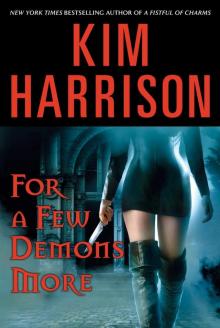 For a Few Demons More
For a Few Demons More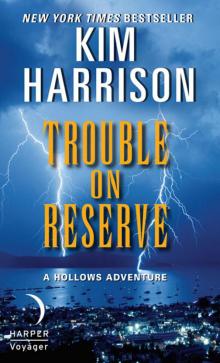 Trouble on Reserve
Trouble on Reserve The Turn: The Hollows Begins With Death
The Turn: The Hollows Begins With Death Once Dead, Twice Shy
Once Dead, Twice Shy Ever After
Ever After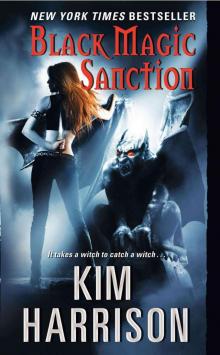 Black Magic Sanction
Black Magic Sanction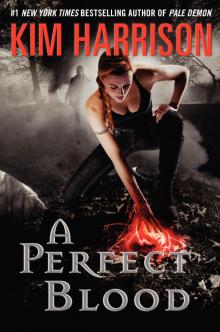 A Perfect Blood
A Perfect Blood A Fistful of Charms
A Fistful of Charms The Good, the Bad, and the Undead
The Good, the Bad, and the Undead The Witch With No Name
The Witch With No Name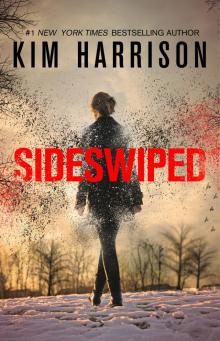 Sideswiped
Sideswiped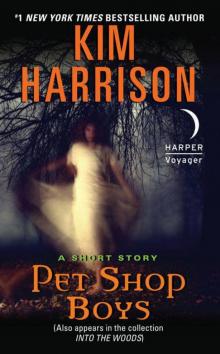 Pet Shop Boys: A Short Story
Pet Shop Boys: A Short Story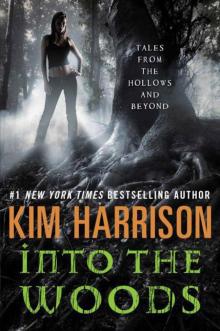 Into the Woods: Tales From the Hollows and Beyond
Into the Woods: Tales From the Hollows and Beyond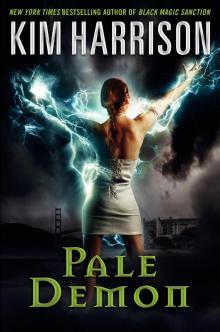 Pale Demon
Pale Demon American Demon
American Demon The Undead Pool
The Undead Pool Every Which Way But Dead
Every Which Way But Dead The Outlaw Demon Wails
The Outlaw Demon Wails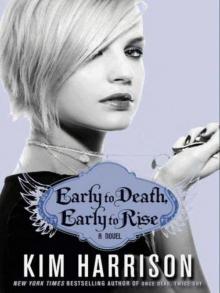 Early to Death, Early to Rise
Early to Death, Early to Rise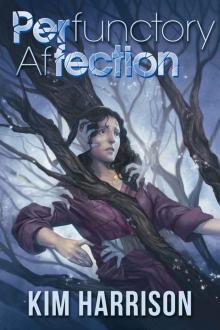 Perfunctory Affection
Perfunctory Affection The Operator
The Operator The Hollows - E-book Extra's
The Hollows - E-book Extra's The Turn
The Turn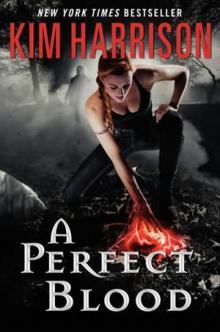 A Perfect Blood th-10
A Perfect Blood th-10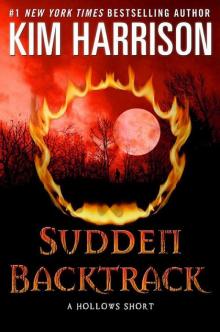 Sudden Backtrack: A Hollows Short
Sudden Backtrack: A Hollows Short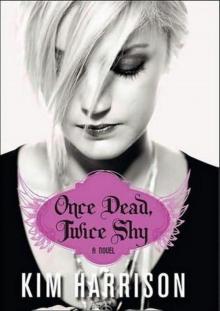 OnceDead,TwiceShy
OnceDead,TwiceShy Holidays Are Hell
Holidays Are Hell Hotter Than Hell
Hotter Than Hell Hollows 11 - Ever After
Hollows 11 - Ever After The Hollows Insider (the hollows)
The Hollows Insider (the hollows) Pale Demon th-9
Pale Demon th-9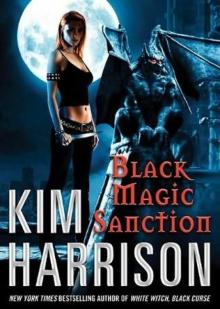 Black Magic Sanction th-8
Black Magic Sanction th-8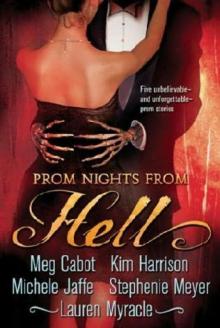 Prom Nights from Hell
Prom Nights from Hell Something Deadly This Way Comes ma-3
Something Deadly This Way Comes ma-3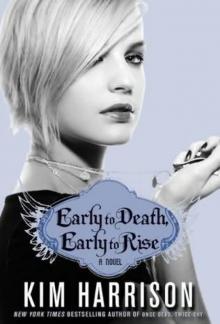 Early to Death, Early to Rise ma-2
Early to Death, Early to Rise ma-2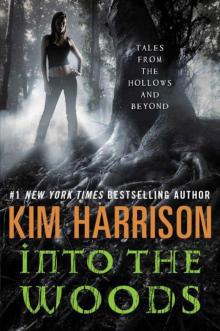 Into the Woods
Into the Woods The Hollows
The Hollows Ever After th-11
Ever After th-11